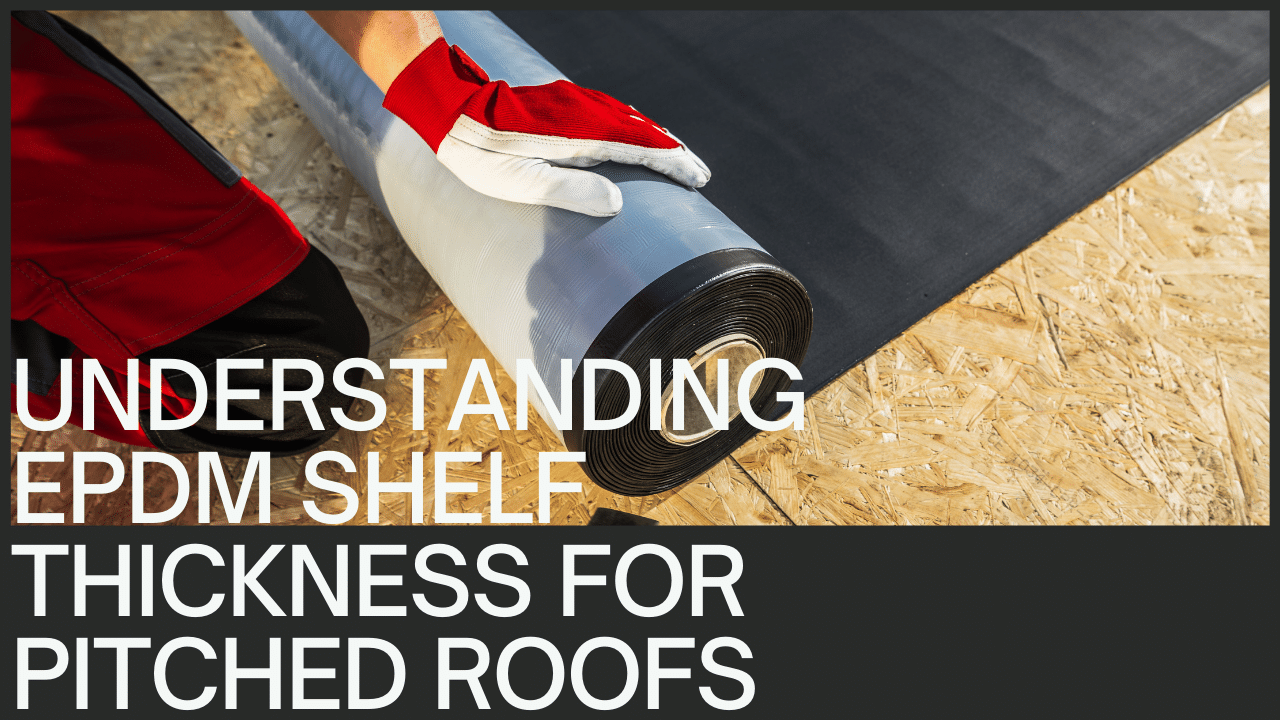What is the Best Thickness of EPDM Membrane for the Flat Roof?
EPDM (ethylene propylene diene monomer) is an option due to its longevity, flexibility, and the fact that it does not compromise changing climates. This is a synthetic elastomer; it is frequently used on commercial and residential buildings. The weighing factor in choosing the right thickness of the EPDM membrane on a flat roof is that it will be able to match up with the right performance and longevity. In this article, we will discuss the importance of choosing thickness for EPDM membranes and mention some of the crucial factors to consider when making that decision.
The key to the knowledge of EPDM Shelf Thickness for Pitched Roofs
The roofing system thickness is the amount of rubber material employed for the EPDM roofing layout. It plays a certain part in building the roofing capacity and roof quality. Thicker membranes, in most cases, provide better ways to prevent punctures, tears, and UV damage. This off-grid design also offers better insulation and is more resilient to extreme weather. In contrast, thinner cap sheets do not cause any extra cost, so serviceability and longevity cannot be as durable as thicker ones.
EPDM membranes have popular thickness options from 45 mils (1.14 mm) to 90 mils (2.29 mm). On the other hand, the thickness is measured in mils (one mil corresponding to one-thousandth part of an inch). Different elements like the climate, building region, roof design, and other budgetary requirements influence the selection of thickness.
Points that Need to be Considered When Selecting the EPDM Stratum Thickness
1. Climate and weather conditions: The temperature, airflow, and other general environmental conditions in which the construction is carried out will determine the thickness required for the EPDM membrane.
2. Building location and orientation: The zone of the building is also significant in the decision to make EPDM membranes of various quantities.
3. Roof design and slope: Through the selection of the roof design and slope, one is able to pick the appropriate thickness of the EPDM membrane. Slightly tilted surfaces need heavier membranes of about the same thickness, which can prevent the additional weight of water from building up and the possibility of moisture leaks.
4. Budget and cost considerations: One of the key aspects is also the budget. The fact that thicker membranes usually cost more than the thinner varieties is a given. Nonetheless, one must balance the initial cost against the advantages and the long-term savings.
Positive Aspects and Pitfalls of Various EPDM Membrane Thicknesses
1. Advantages of thicker membranes: The use of thick EPDM membranes in flat roofing has some advantages. They show a greater immunity to punctures, tears, and impact damage, so they make a good choice for areas that often hail or are frequented by heavy traffic. Thicker membranes also show an increased insulation ability, which can result in energy savings and lower heating or cooling bills.
2. Disadvantages of thinner membranes: Thinner EPDM membranes may be more cost-effective in the initial stage, but they may be compromised in the aspect of durability and longevity. They are much more prone to be penetrated and torn, and UV radiations are more damaging. Thinner membranes may need maintenance and repair more frequently, increasing in the long term, cost.
3. Cost implications of different thicknesses: EPDM membrane cost increases as its thickness grows. Thick walls need more materials; hence, the cost is higher than that of thinner walls. Nevertheless, the fact that the total cost of the roofing will significantly fall through reduced maintenance and repair costs shall be considered when assessing the project's viability.
The Owner's Guide on EPDM Membrane Thickness for Flat Roofing
Deciding what the best EPDM membrane thickness for your flat roof can be intricate. It is recommended that you ask for professional help to evaluate your needs and be given the expert advice that you need. They will take into consideration the climate of the area, the roof design, and the building location, among others, before recommending the most suitable thickness.
Life Expectancy and Maintenance of EPDM Membrane Based on Its Thickness
By conducting periodic upkeep, you can achieve a longer service life for your EPDM membrane roof. The thickness of the membrane may affect the maintenance needs, which in turn could also increase the frequency of inspections. Owing to the greater strength and resilience of thicker membranes, they often need fewer repairs because they are less likely to get damaged. On the other hand, the thickness of the part itself is also crucial, but it should be inspected on a regular basis to detect any traces of wear, tear, or potential problems.
The expected lifetime of EPDM membranes depends on the quality of the material and on the proper installation and maintenance. Thicker membranes generally tend to have longer shelf life compared to thinner ones. A properly maintained EPDM membrane roof can remain effective for periods spanning 20 to 30 years and even up to 40 years or more, offering long-term coverage and reassurance.
In the end, it is the right EPDM membrane thickness selection that will be the key factor in making sure that the flat roofs will perform optimally and will have a long life. Thicker membranes offer better wear and tear resistance, reducing susceptibility to damage and providing insulation. Getting roofing expert advice and doing a detailed roof check should be top priorities if you are to make a well-informed decision on the right thickness of the EPDM roof membrane for your flat roof. Frequent maintenance is essential irrespective of membrane thickness, although thicker membranes usually require less frequent checkups and repairs.


